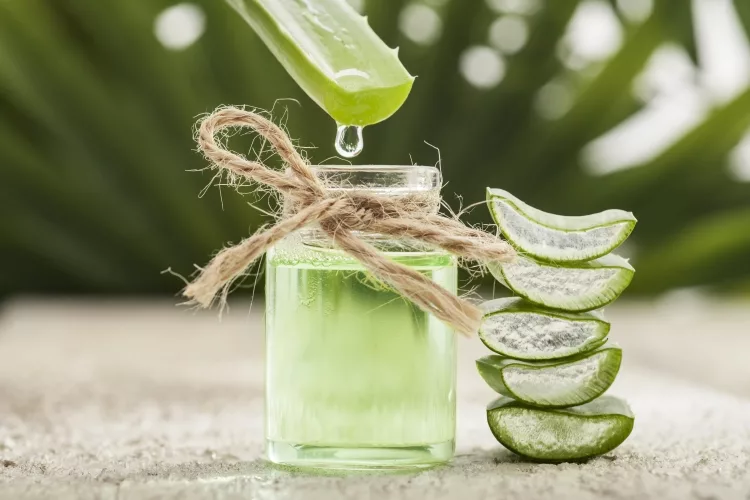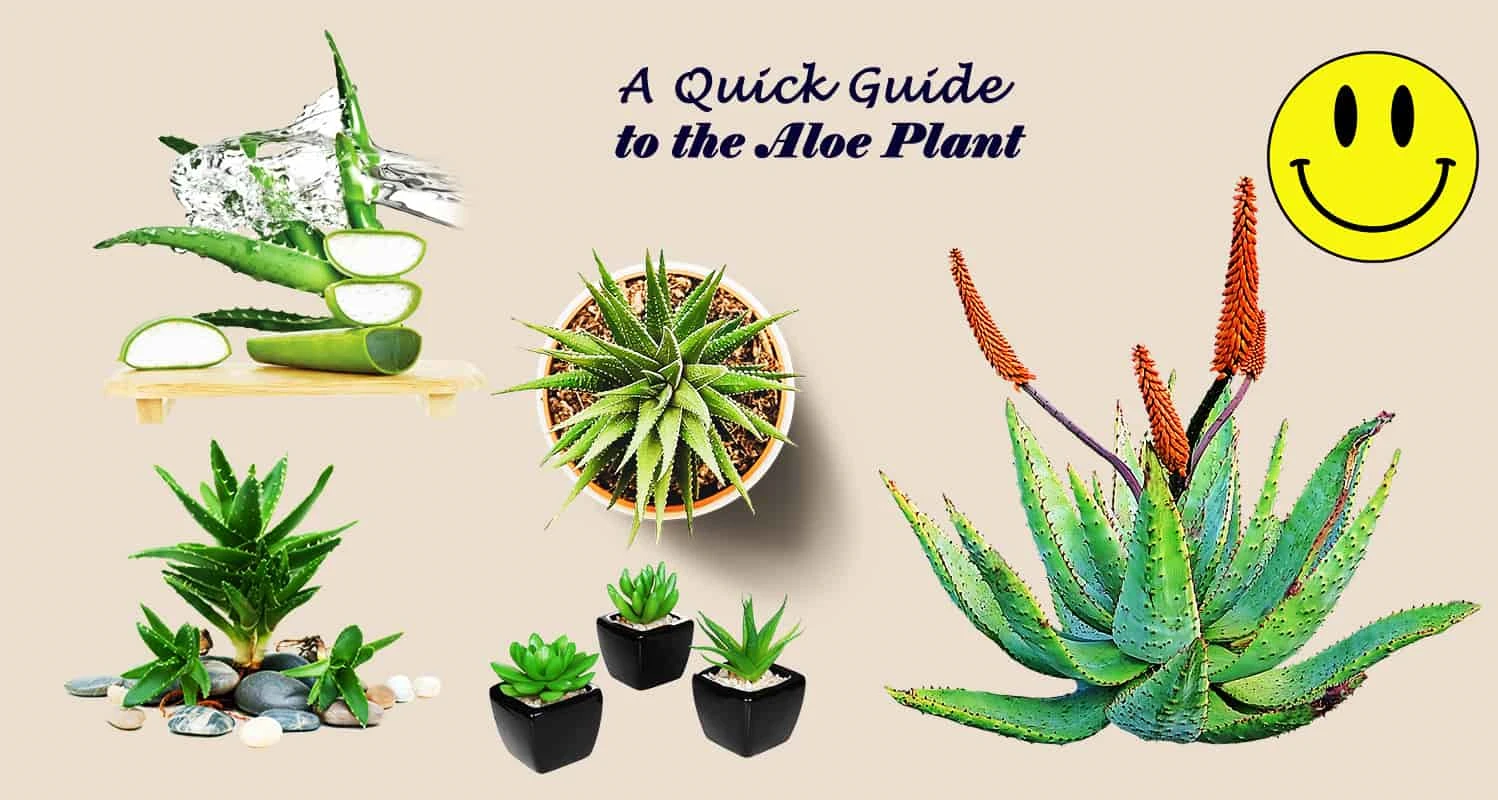reviewed by Christina Lopez
I will share with you not only Aloe Vera plant information but touch on the other members of this vast family of healing plants. Discover new ways to enjoy this herbal favorite in your home.
Contents

Aloe Vera is the botanical name however with the vast varieties of aloe plants there is a large variety of associated names with this plant. Other well-known varieties include Aloe Ferox, Aloe Arborescens, Aloe Aristata, Aloe Polyphylla, Aloe Maculata, and many more. A list of over 500 species.
The Aloe species itself bears several synonyms: A. Barbadensis Mill., Aloe Indica Royle, Aloe perfoliata L. var. Vera and A. Vulgaris Lam. A. capensis, A. vulgaris, A. Mexicana
This also ranges from the vast types. In my household, it was often called the first-aid plant and for the longest time, I believed that was its name. Some common other names are Aloe, Aloe Vera, True Aloe, Cape Aloe, Tap Aloe, Coral Aloe, guinea-fowl, Stone Aloe, Soap Aloe, and many, many more!
The most commonly known Aloe, Aloe Vera, finds its roots in Sudan. Arid dry climates offering a desirable environment for this plant species to flourish. Africa has the greatest number of Aloe species origin in general and many have their heritage from these grounds.
Article Preview: Get To know the First Aid Plant: Aloe Plant Information

That’s Right! Over 500 species of succulents in this family. Aloe Vera is the most common and widely known. These amazing varieties include some diverse growing habits and beautiful looks. Some ground growers to tall spiked aloe with flowering masses.
In addition to the heirloom types, this plant has been widely hybridized creating crosses with plants like Gasteria and Astroloba. Creating plants called Gasteraloe and Aloloba. Learn more about these hybrids here.
Often thought to be a cactus-type plant this succulent can be misidentified. Although on careful inspection the Aloe plants can be fairly simple to identify, especially those classified as true aloe or Aloe Vera. Aloe has distinguishable thick elongated leaves that form around the plant in a circular or rosette pattern. Although it may have spiked edges it does not have splintering cacti thorns or a pocked appearance.
Most aloe plants have no stem but a leaf pattern that creates a uniform growth. Some others have branched stems or branched stems strictly for flowering blooms. Ridged edges can be found on several varieties and others are firm. None have any cacti-type thorns or needles.
Typical growth patterns for Aloe show outer leaves are mature growth while the inner parts house new young leaves that begin at the center of the plant.
Plants range in size from small pots size to massive tall clumps and trees.
Tree type bears a trunk and grows quite large. Examples are Aloe Medusa and Aloe barberae. The leaves of the tree type grow from the trunk top in a primary bunch.
Grass-type like Aloe cooperi which has finer type leaf that resembles thick blades of grass.
Aloe Vera Clear identifying qualities
Aloe Vera is the most sought variety for the home grower so let’s look closer at this variety. Can be found sold as Aloe Vera, Aloe Vera Barbadensis, or Aloe Vera Barbadensis Miller. There are 2 color variations. A blueish green shade and green color. The green color starts young with a yellow tone with sometimes visual white stripes. Those stripes fade as the plant matures and the color deepens.
Aloe Leaf inner, and Outer Leaf*
In 2002, the Food and Drug Administration banned aloin a compound found in the outer leaf of the Aloe plant. This is often referred to as Aloe latex. Recommended only for topical use and not ingestion. It is however still consumed and used as a laxative today. Caution is needed and limited dosage and duration are always recommended.
Before Looking at aloe’s rich benefits it is important to see its valuable makeup. Aloe is rich in various compounds that lead to its popularity and history as a medicinal herb.
Varieties with as many as 75 active constituents( Aloe Vera, Aloe Ferox): Including vitamins, enzymes, minerals, and amino acids
Acne, Eczema, and Psoriasis. Aloe’s soothing action helps reduce skin inflammations and promotes healing. The hormone gibberellin also stimulates new cell growth helping to minimize scarring.
cooling antioxidants. A common use of aloe and a tried a true sunburn soother and healer.
Heat and chemical. Reduces itching while soothing the inflamed tissues. Also reduces scarring and improves healing time.
Increases healing time and reduce outbreak length of herpes flares.
Loaded with many vitamins, minerals, and antioxidants that help combat the signs of aging. Improve skin firmness and help generate new skin cell growth.
Again due to its rich compounds and skin cell regenerative abilities. Aloe can help reduce the scarring left by stretch marks and improve the elasticity of the skin.
Great for any skin type. A natural moisturizer that does leave a buildup or oily residue. Use after shaving for a cooling moisture effect.
General wound healing aid. Scrapes and cuts can benefit from the anti-microbial properties to help clean and improve wound healing.
The Proteolytic enzymes in combination with the other nutrient-rich compounds of Aloe make it an ideal partner in your hair care regimen. This enzyme naturally repairs dead skin cells on the scalp, reducing itching, removing dandruff, and promoting healing.
Besides, the aloe nutrients condition the hair giving it shine and elasticity. Aloe can be added to your current hair care products but for best results avoid unnatural chemical-laden solutions. Mix equal amounts of Aloe juice and Coconut oil for a natural conditioning treatment.
I have mentioned in this article about aloe latex. It is something that warrants being mentioned here again in case you skipped to this section. Aloe latex is the yellow sap from the base of the aloe plant and the firm outer portion of the leaf. The latex is not recommended for internal consumption or at least on a monitored limited basis.
Aloe juice can help pH balance the digestive tract and help to normalize digestion.
With Caution. Aloe latex is an excellent laxative that stimulates active bowel production.
Stimulates the body to break down and use the food we eat to create fuel for every cell in the body. This enzyme production stimulates the immune system and enables it to better be able to fight infections.
Some indications show that Aloe naturally lowers the body’s blood sugar, which can be beneficial for those with type 2 diabetes.
Due to its digestive capabilities, rich nutrients, and body balancing capabilities aloe has shown the potential to aid in a healthy diet. It nourishes the body’s energy and healing properties. pH balances and aids diabetes. These can all be factors in obesity.
See Other precautions at Webmd.
⇒Disclaimer: The information presented here by Inside Herb Gardens and Its Authors is intended for educational purposes only. These statements have not been evaluated by the FDA and are not intended to diagnose, cure, treat or prevent disease. Individual results may vary. Before using any herbs, supplements, or other natural treatments it is always advisable to consult your own doctor or medical professional.
If you live in the US grow zones 8 to 11 growing Aloe outside is an easy venture. With all the many species varieties you can grow a beautiful rich succulent garden with many different features.
However, for many of us, including myself, gardening Aloe must be kept indoors. Thankfully Aloe makes a great houseplant. It has minimal care requirements and survives for many many years.
Learn more about Growing aloe from the article below.
Growing Aloe Indoors – Popular Easy to Grow Plant
References & Additional Resources:With so many varieties of aloe available, I am sure there is more to be discovered about this plant. Although the most commonly known is Aloe Vera often sold medicinally is Aloe Ferox. The compounds that make up these two aloes are very similar and carry similar constituents.
If you are currently purchasing aloe supplements, do you know what Aloe is used in making them? Check the ingredients to find out.
I hope you enjoyed this look at the amazing aloe plant benefits, uses, and information. If you have more you would like to share or experiences you have had please share! Drop some comments below!
I know growing up Aloe was in our household, was it in yours?
Be well, happy and healthy!
 |
 |
 |
 |

About Christina Lopez
Christina Lopez grew up in the scenic city of Mountain View, California. For eighteen ascetic years, she refrained from eating meat until she discovered the exquisite delicacy of chicken thighs. Christina is a city finalist competitive pingpong player, an ocean diver, and an ex-pat in England and Japan. Currently, she is a computer science doctoral student. Christina writes late at night; most of her daytime is spent enchanting her magical herb garden.
 |
 |
 |
 |
Check These Out
Get new FREE Gifts. Or latest free growing e-books from our latest works.
Disable Ad block to reveal all the links. Once done, hit a button below
 |
 |
 |
 |